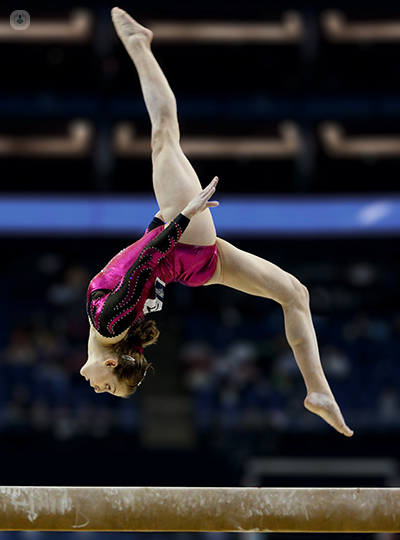Женская атлетическая триада
What is the female athlete triad?
Female athlete triad is a syndrome of three different conditions that affect physically active females. The three conditions it is comprised of are:
- Low energy availability with or without disordered eating
- Amenorrhoea (absence of menstruation) and other menstrual disturbances
- Decreased bone density (osteoporosis)

Prognosis:
Each of the conditions that this syndrome comprises of have their own outlooks and prognoses. For example, sustained low energy can result in depression and anxiety. Disordered eating can lead to anorexia nervosa which can prove fatal if not treated. It can also cause other health problems, affecting the reproductive, endocrine, renal and central nervous systems. Women with prolonged amenorrhoea can become infertile if they are not treated. Lastly, having decreased bone density can increase the likelihood of stress fractures and injuries.
What are the symptoms of the female athlete triad?
Common signs and symptoms of the female athlete triad can include:
- Fatigue
- Hair loss
- Cold hands and feet
- Disordered eating (low calorific intake and avoiding ‘unhealthy’ foods or having fasting periods)
- Dry skin
- Weight loss
- Amenorrhoea (cessation of menstruation for more than three months)
- Low self-esteem
- Depression
- Anaemia
- Vaginal atrophy
- Bradycardia (a low heart rate)
- Increased time needed to heal from injuries
Medical tests to diagnose the female athlete triad:
Patients diagnosed with the female athlete triad do not have to show all three components simultaneously. If a female athlete shows signs of just one component of the triad, the specialist should also evaluate them for signs of the other components. This is because early detection of the triad is best for a successful recovery. Assessing the menstrual cycle can be a good tool for doctors to determine if an athlete is at risk of the female athlete triad. This can involve taking a pregnancy test and a laboratory evaluation of follicle-stimulating hormone, thyroid-stimulating hormone and prolactin levels. A blood test will also be taken to test for electrolyte levels (including calcium) and glucose levels. Additionally, the urine may be analysed and an electrocardiogram performed.
What are the causes of the female athlete triad?
The leading cause of the female athlete triad is the imbalance in energy intake and energy expenditure. Female athletes use a lot of energy in training and are often careful in what they eat. This can result in disordered eating and not consuming enough food to compensate for the energy being used. Weight loss resulting from dietary restrictions can result in amenorrhoea because weight-loss affects the hypothalamus’s ability to secrete hormones needed for the secretion of sex hormones. Osteoporosis and reduced bone density result from low oestrogen levels and poor nutrition, which are both factors contributed by the two other components of the female athlete triad.
Can the female athlete triad be prevented?
The main element of preventing the female athlete triad is raising awareness and educating female athletes and coaches. Athletes need to be informed about nutrition and the importance of eating enough, as well as knowing when to rest and recover. Additionally, all women should have a good understanding of what a healthy menstrual cycle looks like. Also important is having good communication between the athlete, their coach and their family, and encouraging athletes to seek counselling can help too to prevent the full onset of the triad.
Treatments for the female athlete triad:
Treatment should be given by a multidisciplinary team, including obstetricians and gynaecologists, mental health specialists, sports nutritionists and their coach, if applicable. Treatment aims to restore regular menstruation and rebalance energy expenditure with energy consumption.
The following recommendations will be made for those diagnosed with the female athlete triad:
- Oral contraceptives – to regulate the menstrual cycle, however, these won’t often be effective without changes in diet and necessary weight gain. These may also be given to treat osteoporosis.
- Reduced exercise – patients will be asked to reduce time spent exercising by at least 10%.
- Eating more – patients can work with a nutritionist to increase their consumption of food to reach a healthier weight.
- Seeking psychological support – this can help change the patient’s relationship with food and help with any mental health problems, such as anxiety, depression or low self-esteem.
- Medication – nutritional supplements, such as calcium and vitamin D can be recommended to increase calcium absorption to improve bone density. Some athletes may require anti-depressants as well.
However, treatment of the triad can be challenging, especially if the athlete’s coach opposes weight-gain because it will affect sport performance. To overcome this, having realistic goals and being informed about the risks of avoiding recovery should be given to the athlete and coach.
Which type of specialist treats the female athlete triad?
The female athlete triad is treated by a multidisciplinary team, comprising of obstetricians and gynaecologists, rheumatologists, mental health practitioners, nutritionists and dieticians.